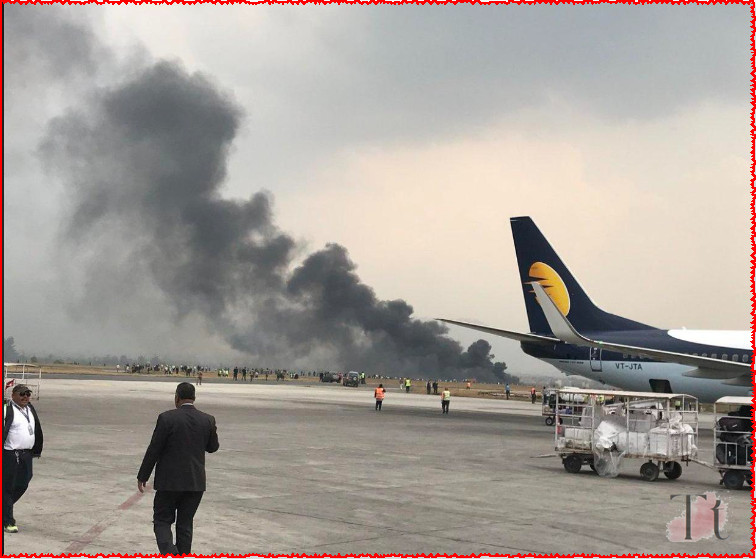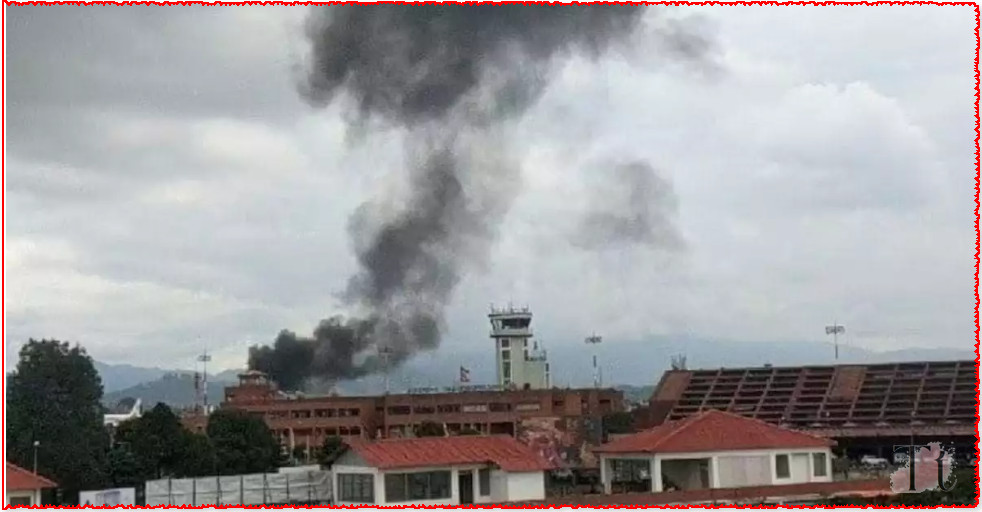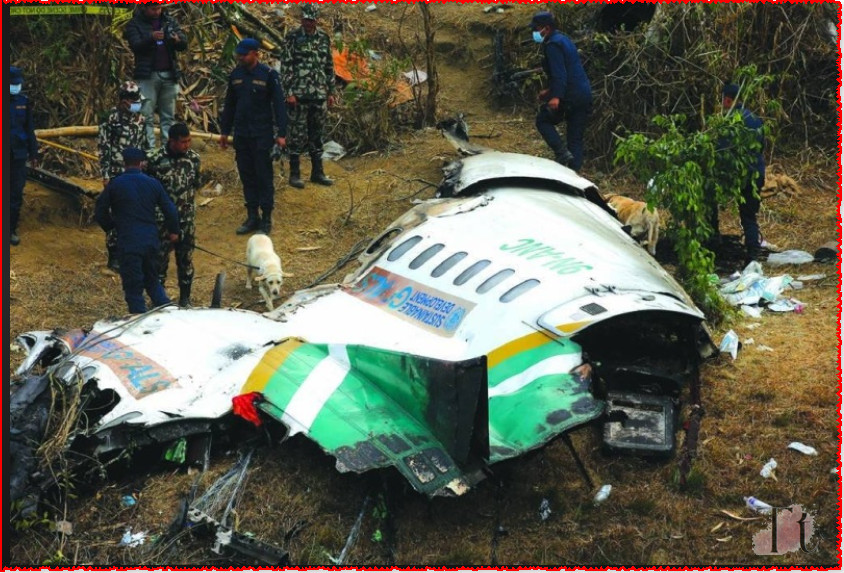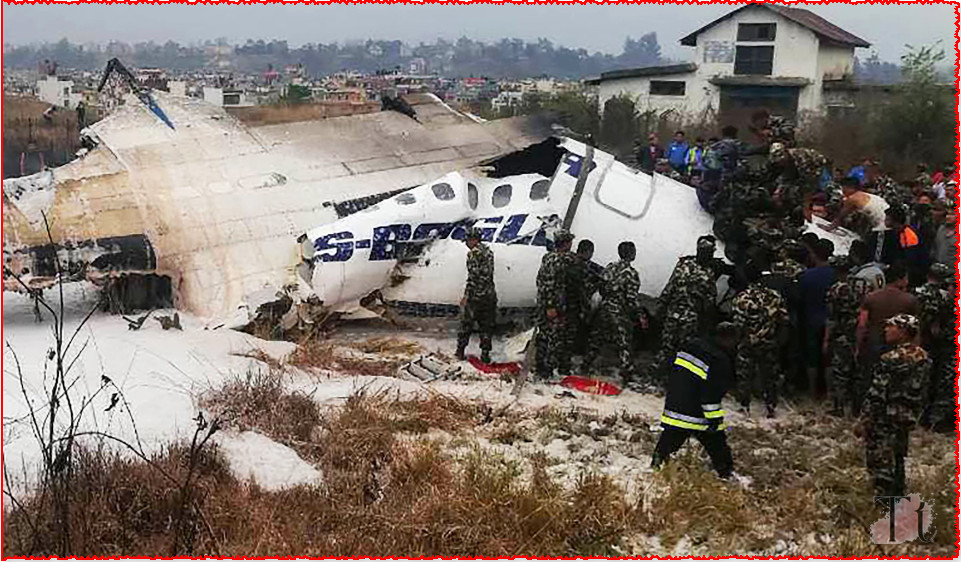Introduction
The ever so majestic Himalayas is what Nepal is known for and some of the highest peaks in the world reside within its borders. Nevertheless, Nepal has an aviation safety record better-known for catastrophes. Difficult terrain, bad weather and poor infrastructure also make air crashes relatively common in the country. These conditions cumulatively create a hazardous flying environment that requires the highest level of skill and caution by both pilots as well as airlines.
Table of Contents
One of the most recent aviation accidents that rocked the country was a Shaurya Airlines plane crash during takeoff from Tribhuvan International Airport in Kathmandu. The Nepal airline crash has also highlighted several long-standing aviation safety hazards in the country-and once again, raises arguments for upgrading airport and pilot training standards as well as aircraft maintenance.

Overview of the Incident
The Shaurya Airlines plane crash took place at around 11 a.m. The flying machine, with 19 individuals on board counting crew members, was a planned flight – Pokhara-bound Buddha Air BUDDHA AIR B1900D slammed close Kathmandu Airport in Gosainkunda Yesterdays; because the plane returned to the runway after take-off from Tribhuvan Global Terminal in Kathmandu and afterward broke into two pieces.
The plane slid off the runway as it tried to take-off, causing fatal impact and fire. In the immediate aftermath, it was devastating as well with the aircraft in flames and chaos all around making rescue efforts difficult. Although the response from police and fire rescue was commendable, they were also challenged by the severity of what had taken place.
Nepal Airline Crash (a Detailed Story)
Launch and immediate aftermath
Kathmandu, the capital of Nepal which is located in an earthquake-prone Himalayan region, has been a notorious aviation bottleneck for more than three decades. The small Tribhuvan International Airport on its eastern rim often closed at short notice because jetliners with long-haul flights sometimes had to circle overhead several hours before touching down stageside snow capped mountains (see map). This is a table top airport whereby if you drive off the ends of the runway it’s all down with bit drops. This geographic feature makes the job particularly difficult and made worse by how weather affects operations
The Shaurya Airlines plane took off from the runway on this fateful day but crashed soon. Initial reports and eyewitnesses suggest that the aircraft might have developed some technical snag or it could be caught by sudden adverse weather conditions which has led to crash.
Rescue Efforts and Casualties
Police and fire first on-ground for the rescue mission. The country’s response was quick, it no longer made a difference. The advanced fire made it impossible for rescuers to go near the plane and rescue people from inside.
Initial reports said four passengers were killed on the spot while five other bodies were retrieved from debris. The survivors were in very serious condition with multiple injuries.
Tribhuvan International struggle zoneAirport
Table-top Airport Dynamics
In the case of Tribhuvan International Airport, operating from a table-top airport is complex. The geography ensures a hazardous environment for departures and landings.
Pilots operating at such airports require specialized training and extensive experience to navigate these challenging conditions safely. The margin for error is minimal, and even minor deviations can result in catastrophic outcomes, as evidenced by the Shaurya Airlines crash, a tragic example of a Nepal airline crash.
Weather and Technical Issues
Nepal’s weather conditions can change rapidly, adding another layer of difficulty to aviation operations. Sudden weather changes, including unexpected gusts of wind, fog, and storms, are not uncommon. These conditions can severely impact the performance and safety of aircraft during takeoff and landing.
In the case of the Shaurya Airlines crash, which is a significant example of a Nepal airline crash, it remains to be confirmed whether weather played a significant role. Be that as it may, given the region’s history and the challenging environment, it remains a conceivable factor in this Nepal airline crash. Additionally, technical issues with the aircraft, such as engine failure or mechanical malfunctions, could have contributed to the crash. Detailed investigations will be necessary to determine the exact cause of the incident and understand its implications for future Nepal airline crashes.
Shaurya Airlines: Background and Safety Record
History and Fleet
Shaurya Airlines is a domestic carrier in Nepal, primarily operating on routes connecting major cities with remote areas. The carrier has a armada of little to medium-sized air ship, appropriate for short-haul flights Over the years, Shaurya Airlines has become an essential part of Nepal’s domestic air.

Despite its operational significance, the airline’s safety protocols and aircraft maintenance practices will now come under intense scrutiny following this crash. Ensuring the safety of passengers and crew is paramount, and this incident highlights the need for stringent adherence to safety standards.
Previous Incidents and Safety Measures
Prior to this crash, Shaurya Airlines had a relatively stable safety record, with no major incidents reported in recent years. However, the broader aviation sector in Nepal has faced numerous challenges.
Despite these efforts, incidents like the Shaurya Airlines crash and other Nepal airline crashes highlight the ongoing difficulties in achieving and maintaining international safety benchmarks. The CAAN and airlines operating in Nepal must continue to work diligently to enhance safety measures, including rigorous maintenance schedules and comprehensive pilot training programs.
Aviation Safety in Nepal: A Broader Perspective
Historical Context
Nepal’s aviation history is marked by numerous tragic incidents, many of which have been attributed to the country’s difficult flying conditions. High-altitude airports, unpredictable weather, and challenging terrain create a high-risk environment for aviation. These factors make flying in Nepal inherently dangerous, requiring exceptional skill and caution from pilots and airlines.
Historical Context
Nepal’s aviation history is marked by numerous tragic incidents, many of which have been attributed to the country’s difficult flying conditions. High-altitude airports, unpredictable weather, and challenging terrain create a high-risk environment for aviation. These factors make flying in Nepal inherently dangerous, requiring exceptional skill and caution from pilots and airlines.
International Concerns and Recommendations

International aviation bodies, including the International Civil Aviation Organization (ICAO), have repeatedly expressed concerns about Nepal’s aviation safety standards. The ICAO and other organizations have made numerous recommendations to enhance safety, including:
- Pilot Training: Emphasizing the need for specialized training programs that focus on high-altitude and table-top airport operations.
- Airport Infrastructure: Advocating for significant investments in airport infrastructure, such as extending runways, improving navigational aids, and enhancing emergency response capabilities.
- Aircraft Maintenance: Stressing the importance of regular and thorough maintenance of aircraft, with stringent adherence to safety standards enforced by regulatory bodies.
Despite these recommendations, achieving the necessary improvements has been a slow and challenging process. The Shaurya Airlines crash serves as a stark reminder of the urgent need for continued efforts to enhance aviation safety in Nepal.
The Aftermath: Investigations and Reactions
Government and Aviation Authority Responses
In the wake of the Nepal airline crash, the Nepalese government and the Civil Aviation Authority of Nepal (CAAN) reported comprehensive examinations to decide the cause of the accident. These investigations will likely involve collaborations with international aviation safety experts to ensure thorough and unbiased analysis.
The findings of these investigations into the Nepal airline crash will be crucial in understanding the factors that led to the incident and in developing measures to prevent similar occurrences in the future. The government and CAAN are committed to addressing the identified issues and implementing necessary safety improvements.
Public and Media Reactions
The Shaurya Airlines crash received widespread media coverage, both domestically and internationally. The Nepal airline crash has prompted public reactions ranging from deep sorrow for the victims and their families to calls for immediate improvements in aviation safety.
The incident has reignited debates about the safety of flying in Nepal, with many demanding stricter regulations and better enforcement of existing safety measures. The public’s demand for accountability and transparency will likely drive the government and CAAN to take more robust actions to enhance aviation safety.
Lessons and Future Directions
Enhancing Pilot Training
One of the critical areas that need attention is the training of pilots to handle the unique challenges posed by Nepal’s airports. Specialized training programs focusing on high-altitude and table-top airport operations should be mandatory for all pilots operating in the region.
These programs should include:
- Simulator Training: Utilizing advanced flight simulators to replicate challenging conditions and scenarios that pilots might encounter in Nepal.
- On-the-job Training: Providing opportunities for pilots to gain hands-on experience under the supervision of experienced instructors.
- Regular Assessments: Conducting periodic assessments to ensure that pilots maintain the necessary skills and knowledge to operate safely in Nepal’s challenging environment.
Upgrading Airport Infrastructure

Investing in airport infrastructure is crucial to enhancing aviation safety in Nepal. This includes:
- Runway Extensions: Extending runways where possible to provide pilots with more room for safe takeoffs and landings.
- Improved Navigational Aids: Installing and upgrading navigational aids, such as Instrument Landing Systems (ILS) and weather monitoring equipment, to assist pilots in navigating challenging conditions.
- Enhanced Emergency Response Capabilities: Strengthening emergency response capabilities, including firefighting equipment, medical facilities, and trained personnel, to handle incidents more effectively.
Aircraft Maintenance and Safety Checks
Regular and thorough maintenance of aircraft is non-negotiable. Airlines must follow to rigid support plans and security checks to guarantee that all airplane are in ideal condition some time recently each flight. The role of regulatory bodies in enforcing these standards cannot be overstated.
Conclusion
The tragic Shaurya Airlines crash at Tribhuvan International Airport is a sobering reminder of the ongoing aviation safety challenges in Nepal. This Nepal airline crash has highlighted the immediate need for rescue efforts and a thorough investigation to determine the cause. However, long-term measures must also be taken to address the issues revealed by this Nepal airline crash and to enhance the overall safety of air travel in the region.
By addressing these issues, Nepal can work towards reducing the frequency of such tragic incidents like the Nepal airline crash and ensuring safer skies for all. Continued focus on improving pilot training, upgrading airport infrastructure, and maintaining strict aircraft maintenance protocols will be crucial in preventing future Nepal airline crashes and enhancing overall aviation safety in the region.
Read more about India Budget 2024: Stock Market Reaction,Benefits, Drawbacks


1 thought on “Nepal Airline Crash Analysis and Full Solution : 2024”